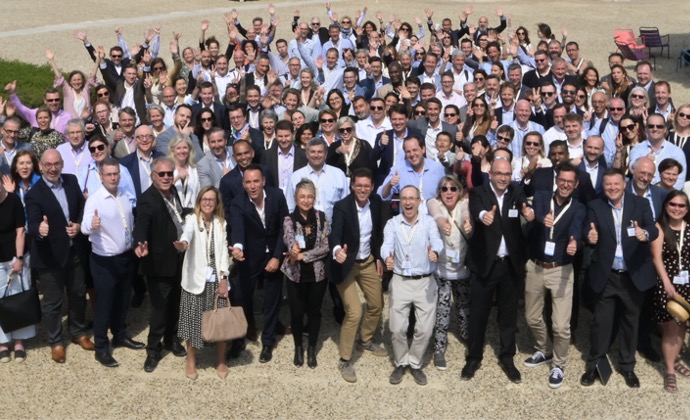Using science with purpose to deliver for patients
2024 – Integrated annual report – opening Q&A

In 2024, we continued to deliver against our strategy across all four pillars. We achieved strong results, brought multiple new medicines to patients, expanded our pipeline and continued to build a culture of impact.

How have you seen Ipsen change and grow since you joined the company in 2020?
Over the past four years, we’ve focused on implementing our strategy, and we’re seeing how well it is working. We’ve delivered new medicines that benefit patients who would otherwise have few or no treatment options while also delivering four years of consecutive growth.
Ipsen occupies the unique space between big pharmaceutical companies and small biotechnology startups. We have the strength, expertise and international presence of the former, paired with the agility, purpose and entrepreneurial mindset of the latter.
Today, we are at an inflection point. We have introduced 35 new molecules into our pipeline since 2020. Last year, we launched three first- or best-in-class medicines for five diseases. The years ahead hold huge promise as we continue to accelerate innovation.

Could you walk us through some of the major milestones Ipsen achieved in 2024?
Our teams around the world successfully executed key launches and we received major regulatory approvals last year.
At the same time, we continued the ongoing expansion of our pipeline through internal and external innovation. We are developing transformative new treatments, motivated by unmet patient needs.
For example, we are building on our global leadership in recombinant neurotoxins and our proprietary technology to develop the long-acting neurotoxin (LANT). This is a potential break-through innovation which could. We’re anticipating proof-of-concept data in LANT by the end of the year.
How did Ipsen execute on its sustainability strategy last year?
Our approach to sustainability is part of our company’s ethos and underpins our long-term performance. We focus on four pillars: Environment, Patients, People and Governance. We made great strides in all four areas in 2024.
We achieved almost 99% use of renewable energy across all Ipsen sites, and accelerated our Fleet for Future initiative, that sets ambitious targets in our car fleet.
Ipsen was also ranked 25 in Fortune’s list of the 100 Best Companies to Work For Europe, reflecting our purpose-driven culture. We are steadfast in our sustainability commitments. In the coming years, we will tirelessly pursue our long-term ambition to reduce carbon emissions. We will also continue to prioritize the well-being and development of our employees.

What else should we expect to see from Ipsen in 2025 and beyond?
Our 2024 financial results were strong: we reached €3.4 billion net sales and 9.9% growth at constant exchange rates (CER).
Therefore, we have set Ipsen’s 2025 guidance at more than 5.0% total sales growth at CER and a core operating margin greater than 30% of total sales.
We expect 2025 to be another year of focused, strategic execution, with four major regulatory and scientific milestones in our pipeline. We received a positive opinion from the European Medical Agency (EMA) for Cabometyx® (cabozantinib) in advanced neuroendocrine tumors. We are also excited for a pivotal readout from the Phase IIb FALKON trial of fidrisertib as a treatment for fibrodysplasia ossificans progressiva.
Building on our unique positioning, we will continue to advance science with purpose to bring transformational new medicines to patients around the world.
You mentioned “science with purpose,” which is also the title of this report. What does this mean to you?
Science with purpose reflects our commitment to leveraging the most exciting and promising science in our three therapy areas with the greatest potential to develop into transformative treatments for patients. It’s not about science for science’s sake, it’s about identifying the greatest need, and following the science that has the potential to address those needs.
To give just one example, last year we expanded our portfolio with tovorafenib, a treatment for pediatric low-grade glioma (pLGG), the most common type of pediatric brain tumor. More than half of pLGG cases also have a type of gene mutation associated with poor prognoses. Unlike other treatments, tovorafenib can inhibit the genetic pathway impacted by that mutation to help treat the condition.
Motivated by our ambition to expand the targeted treatment options for all patients with pLGG, we are developing and commercializing tovorafenib outside the U.S. We have filed for Marketing Authorization for tovorafenib in Europe. Also, the ongoing FIREFLY-1 (Phase II) and FIREFLY-2 (Phase III) trials of tovorafenib are expected to deliver results in 2025.